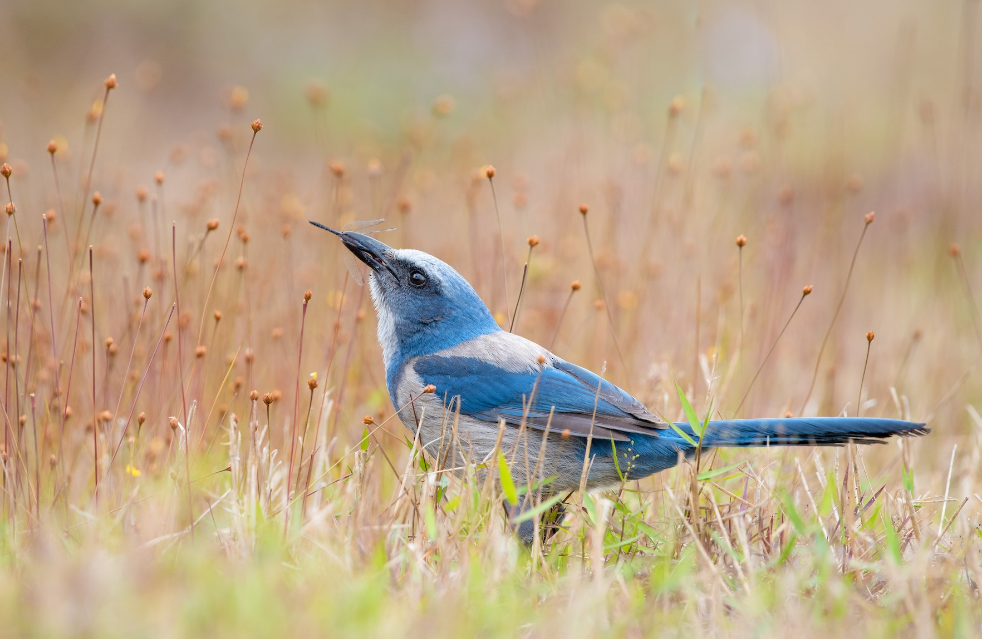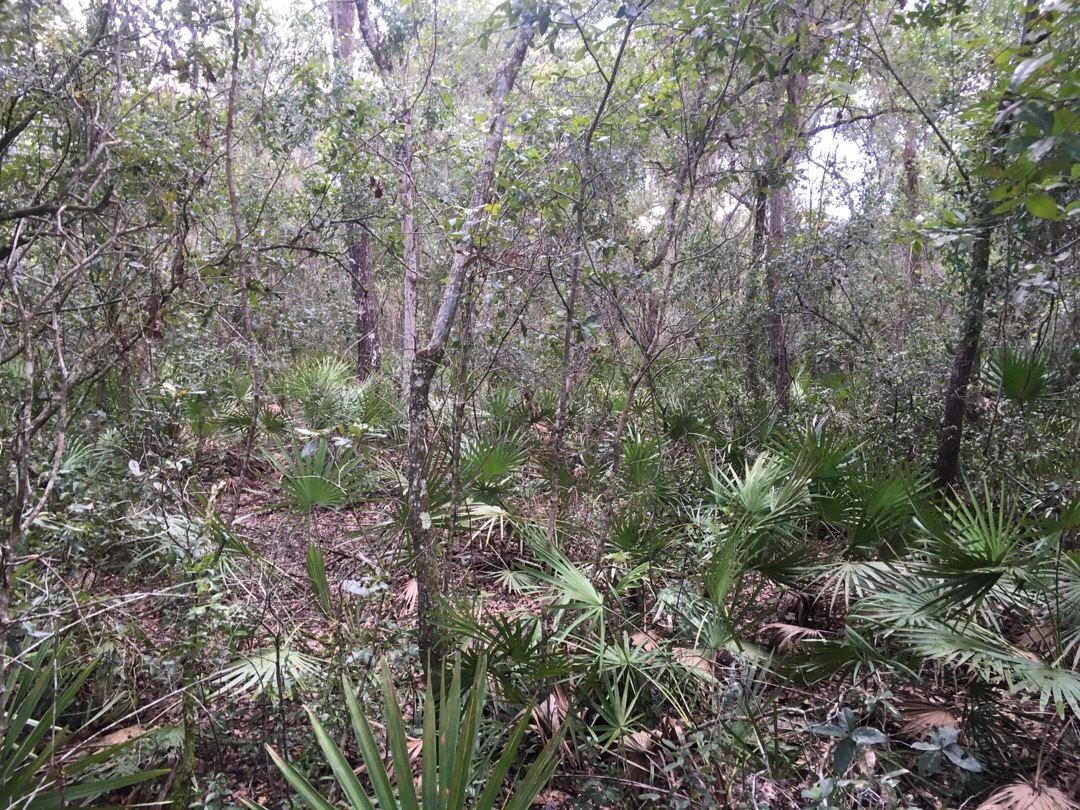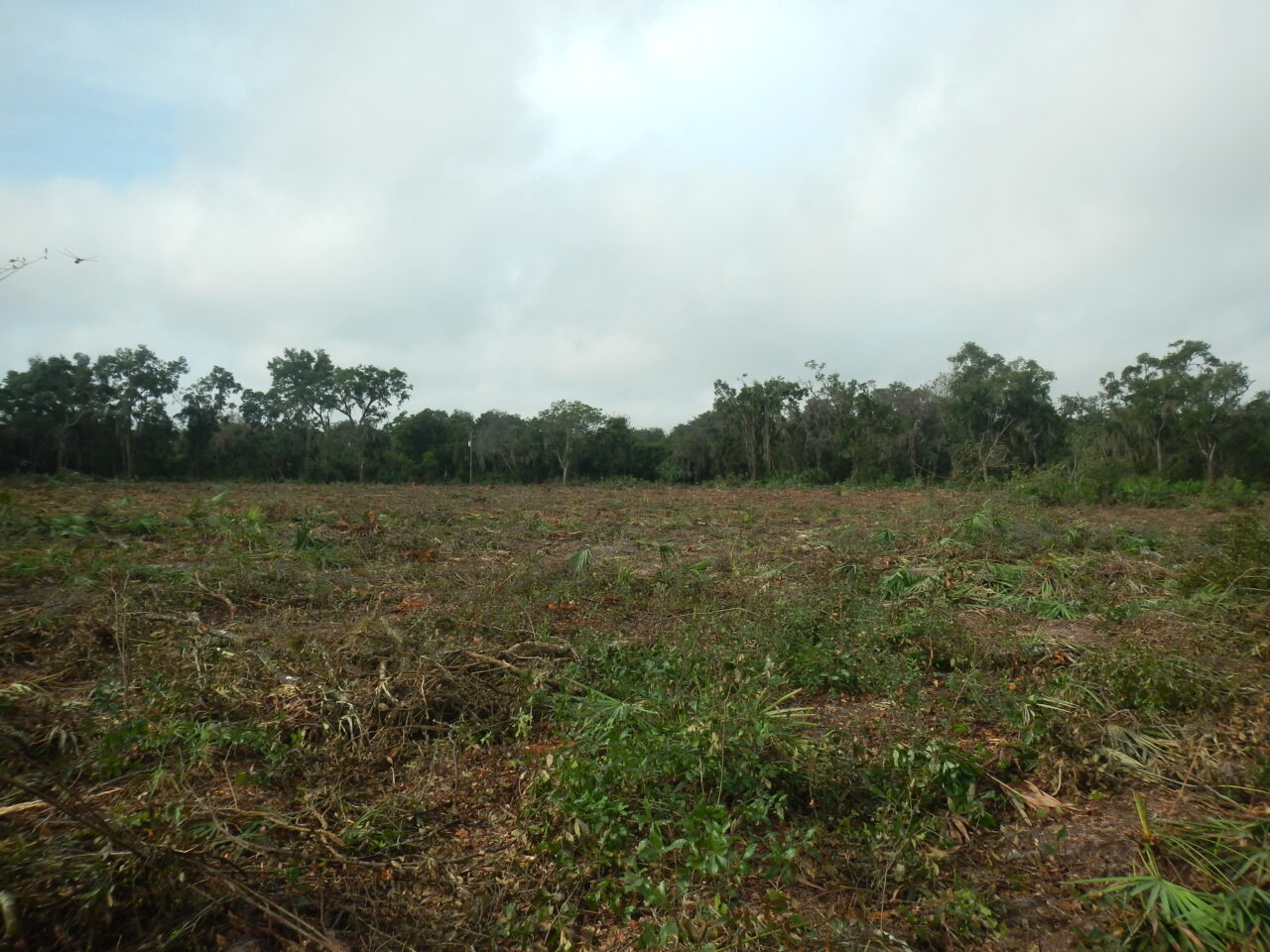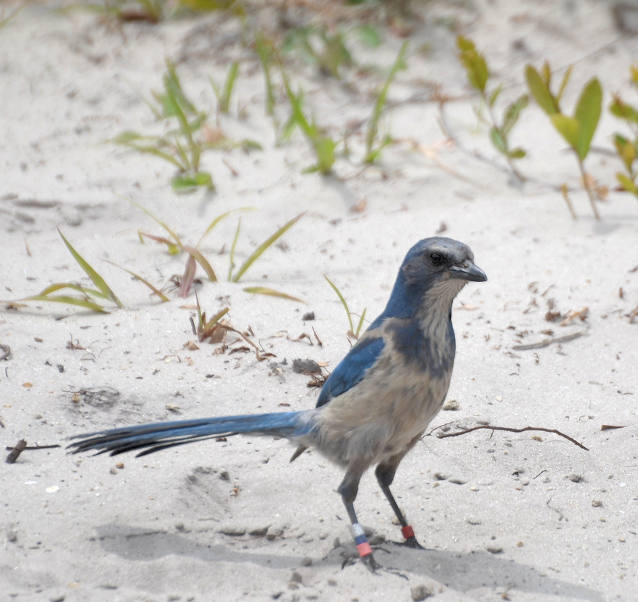Conservation Foundation of the Gulf Coast

Conservation Foundation of the Gulf Coast
Why Bird Conservation?
While many birds and people flock to Florida once the weather grows cold, the Florida Scrub-Jay— the only bird endemic to Florida — calls the state home all year round. However, the Florida Scrub-Jay has particular habitat needs, and increasing pressure from development and habitat fragmentation have caused this bird to be federally listed as a threatened species.
In recognition of the importance of and threats to the Florida Scrub-Jay, the Conservation Foundation of the Gulf Coast (CFGC) is making strides toward preserving and restoring habitat for this bird. Lee Amos, land steward for the CFGC, says that not only are Florida Scrub-Jays the only bird to live exclusively in Florida, but they are also a charismatic and family-oriented species that the community can rally around.
“They have these family groups,” Amos explains. “It’s a very unique lifestyle that people connect with, as it’s like a story of their own life history.”
CFGC works to restore parcels of land back to scrub habitat, which contributes to the Myakka Island Conservation Corridor and provides connectivity for dispersing Florida Scrub-Jays on the landscape. This is especially important to facilitate the exchange of genetics and individuals amongst Florida Scrub-Jay populations in the state.
Spotlight Resources: eBird and Public Outreach

In 2019, CFGC was awarded a Cornell Land Trust Small Grant to conserve and restore scrub habitat on their newly acquired Tatum Sawgrass Scrub Preserve in Manatee County. As an early step in the scrub restoration process, CFGC used eBird, a free online bird checklist program, to identify the presence of Florida Scrub-Jays in the area. Confirming that eBird users had spotted Florida Scrub-Jays on unprotected properties near CFGC’s now-restored Tatum Sawgrass Scrub Preserve strengthened the validity and importance of the project location, Amos noted.

Florida Scrub-Jays aren’t the only ones living in the vicinity of the property; local community members are also important neighbors to the Tatum Sawgrass Scrub Preserve. The three-step restoration process of mechanical tree removal, prescribed burns, and herbicide treatments has significant benefits for Florida Scrub-Jays, but also required regular communication with neighbors to convey the value of this management.
CFGC reached out to nearby community members through letters and invited those who were interested in the process to join an email list or to reach out with any concerns or questions. Amos explains that many neighbors experienced a sense of loss when scrub oak trees were removed for restoration, but CFGC’s outreach efforts ensured that the mission and purpose of their work was largely understood, and that any grievances, such as road damage, could be addressed.
CFGC also enhanced restoration work communication through the creation of short, engaging videos, such as the Florida in Focus- Tatum Sawgrass Scrub Restoration piece posted on their YouTube channel. The videos feature Amos discussing steps of the restoration process and footage of the work being done. Amos notes that the organization received positive feedback from both their members and the general public on these videos, which allow viewers who may otherwise be unfamiliar with the process to visualize the activities and gain a better understanding of how this management is important for critical wildlife within their community.
Making the Connection
The restoration process for the 17-acres of the Tatum Sawgrass Scrub Preserve began with the mechanical removal of scrub oak trees. Prior to fire suppression, natural wildfire events kept scrub oaks around one to two meters tall, a height preferred by Florida Scrub-Jays. Thus, to allow the scrub oaks to successfully resprout in the future to mimic this natural, historic process , their removal did not include the roots.
Next, the cut trees were chipped and mulched, and prescribed burns were applied to excess leaf litter. Following the tree removal and burns, numerous native and invasive weeds grew in the preserve. To address this, CFGC used an herbicide treatment to prevent the growth and spread of the invasive plants.

Not only did these steps create quality Florida Scrub-Jay habitat on the preserve, but the project also had a ripple effect on scrub habitat conservation over the larger landscape. Amos says the restoration of one land parcel can interest and engage surrounding landowners in the process, and thus enhance landscape connectivity.
“It may be chain reaction conservation, as many times a single property acts as a nucleus around which other conservation lands will coalesce,” Amos explains. “You save one piece, and then other pieces around it start to fall into place, and suddenly it’s a snowball effect of land preservation.”
For instance, during the small grant project period CFGC partnered with Sarasota County who purchased a 40-acre land parcel near an existing preserve. This property was also restored as Scrub-Jay habitat and continues to build connected scrub within the Myakka Island Conservation Corridor.
Advice for Other Land Trusts
CFGC may have led the restoration efforts of the Tatum Sawgrass Scrub Preserve, but the success of the project was partially driven by the organization’s relationships with public agencies, contractors, and the community.
Amos shares that technical advice from government agencies is especially helpful for conservation organizations that may have limited capacity or would like insight on a new undertaking. Similarly, having a working relationship with local restoration contractors can also be beneficial when embarking on such projects, especially ones that may have extensive knowledge with invasive species eradication.
Furthermore, Amos also recommends organizations regard communicating with the local community as an important component of restoration projects.
“I’d encourage people to connect with their neighbors first because they’re probably your most important stakeholder which is sometimes easy to overlook,” Amos says. “So connect with them early. Get excited about birds and get out there and create some habitat. It’s a lot of fun, it’s very rewarding.”
Next Steps
Moving forward, CGFC is continuing to monitor the Tatum Sawgrass Scrub Preserve for Florida Scrub-Jays and other wildlife, and conducting regular maintenance to ensure the preserve continues to provide quality habitat.
CFGC also successfully advocated for a land referendum in Manatee County, which designates funding for natural area acquisition and preservation to protect land important for maintaining clean water, eradicating stormwater pollution, and safeguarding fish and wildlife habitats. This dedicated fund for land conservation is a significant next step for species such as the Florida Scrub-Jay, as it will help finance future projects that will protect natural areas at risk for development. Amos says this referendum helps to leverage funds and increase the impact of their work beyond what CFGC accomplished through the small grant program.


